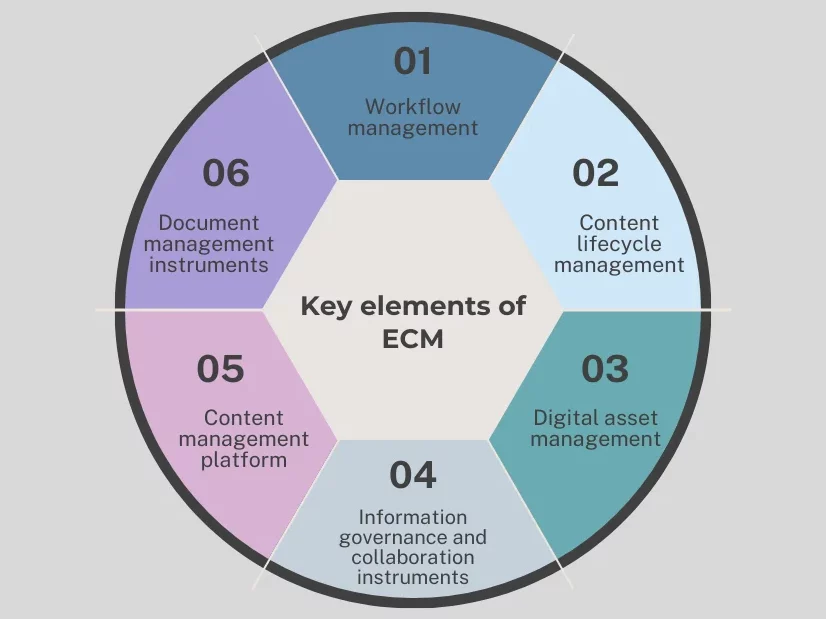Bringing order to chaos, or why it’s worth planning ECM software development


Creating an enterprise content management system that is key to optimising working processes makes a lot of sense. But let us be more specific: How will the solution assist you in achieving business goals?
ECM is an enterprise content management system that encompasses processes related to obtaining, storing, maintaining, organising and delivering meaningful data. It helps to share information between business stakeholders, employees, and customers. Here is a short list of benefits coming with implementing the ECM system: removing dependence on documents and paperwork, driving enhanced customer service, and mitigating organisational risks.
Now that we have an understanding of ECM,let us dwell on its principles of work.

Besides obtaining more efficient content management, leading to more informed decision-making, ECM systems are known for the prevention of data breaches and financial fraud. It is crucial for the protection of a company’s reputation. Additionally, decreasing paperwork inevitably results in better productivity and efficiency of the workflow.
ECM system helps businesses to be ready and react smoothly to unexpected events, ensuring compliance with corporate regulation and saving all the significant data within one digital ecosystem, containing the following principles:
ECM is a complex solution which comprises several functional capabilities, but you may not need all the features to satisfy your business needs. However, here, we will briefly touch upon all necessary ECM elements and components to better understand how the system operates.
Key elements of enterprise content management system:

The primary features of ECM are the following:

ECM systems transform traditional documents into digital data that you can manage and share with all stakeholders promptly.
You are free to use handy search tools to find content using various phrases, keywords, or personal details. Searching for files that match your criteria won’t take lots of time.
Constant interaction with employees, both in and out of the office, is a foundation of close-knit teamwork. Web-based enterprise automation software solutions will empower your team with email notifications and file routing.
A granular security model lets you track which users have opened or edited files. In such a way, the solution allows customers to control access to information and protect their records.
Established record retention practices assist enterprises in meeting government regulatory mandates. Thus, you don’t have to deal with compliance concerns on your own.
If you store content digitally, neither fire nor theft can be a hazard for data preservation. And a team of experienced developers, in their turn, will make all possible efforts to prevent cyberattacks.

We expect this handy checklist will be helpful during the implementation process. It is an essential step for digital transformation, in which the PNN Soft team will gladly support your company.
Modern ECM software is not confined to content management; it encompasses numerous management and organisational instruments. For instance, this platform enables companies to ingest and classify metadata, which is critical nowadays. Social collaboration tools have enhanced end-users’ flexibility. So we’re thrilled with what the newest ECM systems can do.
PNN Soft has delivered programming products for 20 years, and we hone our skills to put our ideas into reliable corporate portals. We implemented numerous projects based on enterprise content management systems. In these processes, special attention is paid to security. We are focused on achieving an in-depth understanding of an individual company’s goals and concerns. That is why our clients prefer long-term cooperation. PNN Soft gives priority to Agile, Scrum, and RAD methodologies to interact with clients effectively, satisfy customers’ needs and obtain more flexibility. Our passionate Agile teams include software developers, GUI designers, testers, managers, and technical writers.
If you plan to create an enterprise content management – ECM system, contact us by filling in the form below.